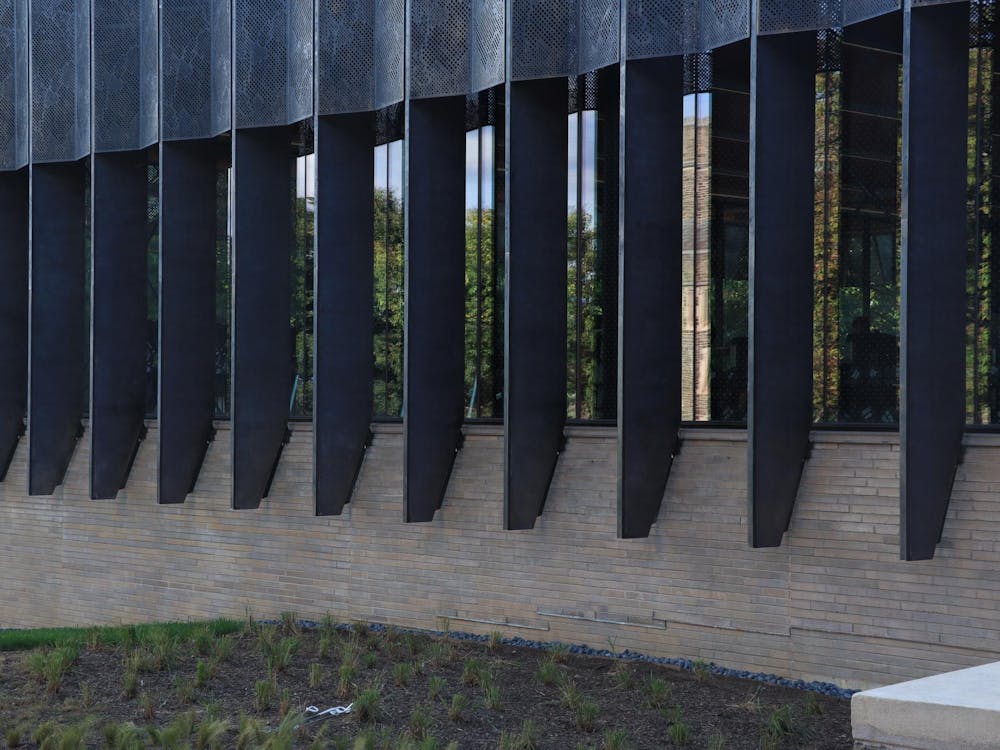Student groups are created for a wide variety of compelling reasons at Princeton, but what better excuse exists than “Yale has one, so why don’t we?”
Yale’s preeminent all-cello rock ensemble Low Strung was established in 2005, followed by Columbia’s String Theory Cellos in 2011. Street sat down with the president of Princeton’s recently established La Vie En Cello, DG Kim ’18, to discuss his role as president, the group’s brief but exciting history and the ensemble’s short- and long-term goals. Kim is a cellist and conductor, as well as a student in the electrical engineering department. He plays in the Princeton University Orchestra, runs Rockefeller College’s Classical Music Hour and serves as music director for the Princeton Chamber Orchestra. Founding La Vie en Cello was just the icing on the cake of Kim’s overflowing list of commitments.
La Vie en Cello is officially recognized by the Office of the Dean of Undergraduate Students and is working toward becoming a Princeton Arts Council-recognized group as well, in order to participate in events such as Tiger Night. Kim started gauging interest in the group this past March and found a great deal of enthusiasm and curiosity from members of the PUO cello section. A good amount of research about competing groups at other universities was required in order to get this project off the ground. Kim had a Skype call with the president of Columbia’s String Theory Cellos, during which he asked for advice and recommendations for starting a similar group at Princeton. Last year, String Theory Cellos was dismantled after all of its members graduated, leaving a significant void for La Vie en Cello to fill, as one of two Ivy League cello ensembles. Yale’s Low Strung tours around the world. Kim noted that touring is one of the group’s long-term dreams, and said he intends to push the ensemble to perform one arch and one more formal concert each semester, in addition to many small gigs and special events.
The potential popularity of an all-cello ensemble on a college campus might be questionable intuitively. Cello is typically a classically inclined instrument, making occasional appearances in rock and pop bands. At Princeton, while tickets for dance and a cappella performances almost always sell out, classical music groups have significantly smaller audiences. To resist the classical stereotype, La Vie en Cello maintains a wide range of repertoire, including classical, but also featuring jazz, rock and pop music. Kim humorously pointed out that there is something about a large group of bulky instruments on stage that draws attention. He recounted the ensemble’s rehearsal for their arch performance, which drew substantial attention from passersby.
A performance of Meghan Trainor’s “All About That Bass” arranged by Kim is featured on La Vie en Cello’s highly polished website in the form of an exciting and even sentimental music video featuring several of the group’s 14 members, 13 of whom are members of PUO. Kim explained that the ensemble strives toward a high level of approachability by performing in the arch setting and maintaining a relaxed, fun-loving performance demeanor.
Musically, an all-cello ensemble is advantaged in many ways. The cello has a deep sound, but can pose as a treble instrument, and can most definitely soar as a solo instrument. A cellist can successfully produce sounds ranging from percussive beats, to harmonic accompanying riffs, to flowing melodic lines. While the cello can serve all of these very different musical functions, the blend of an all-cello group can still be sublime when isolated from an 80-piece orchestra, completely together and poised. A musical ensemble made up of entirely cellos also poses some interesting challenges to both performers and audiences. While the advantages of an all-cello ensemble listed above make sense in theory, they are extremely difficult to achieve. Reaching an ideal balance between the percussive rhythms, accompanying motives and melodic lines is a difficulty that Kim and the other members of the group work tirelessly during rehearsals to overcome by taking tempos way down, and listening to one another with incredible concentration and intensity, watching and mimicking each other’s fingers and bow strokes when necessary. A skillful arranger can also help alleviate balance issues that arise for a homogenous instrumental group. Kim has been arranging for the ensemble with the aid of other group members.
I was lucky enough to see a brief performance by La Vie en Cello during Rocky’s Classical Music Hour one Friday this October. After hearing an exciting rendition of La Vie en Cello’s signature piece, “All About that Bass,” I am convinced that this organization is only at at its very early stages of potentially widespread popularity. Within five minutes of the performance, countless heads had turned and a huge audience was gathered to listen, all fascinated by the strange visual prospect, many dancing and even lip-synching. So take a study break tonight around 10 p.m. and make your way to Blair Arch for not just another arch sing, but something new and refreshing: a cello arch. Let’s show Yale’s Low Strung who’s boss!







